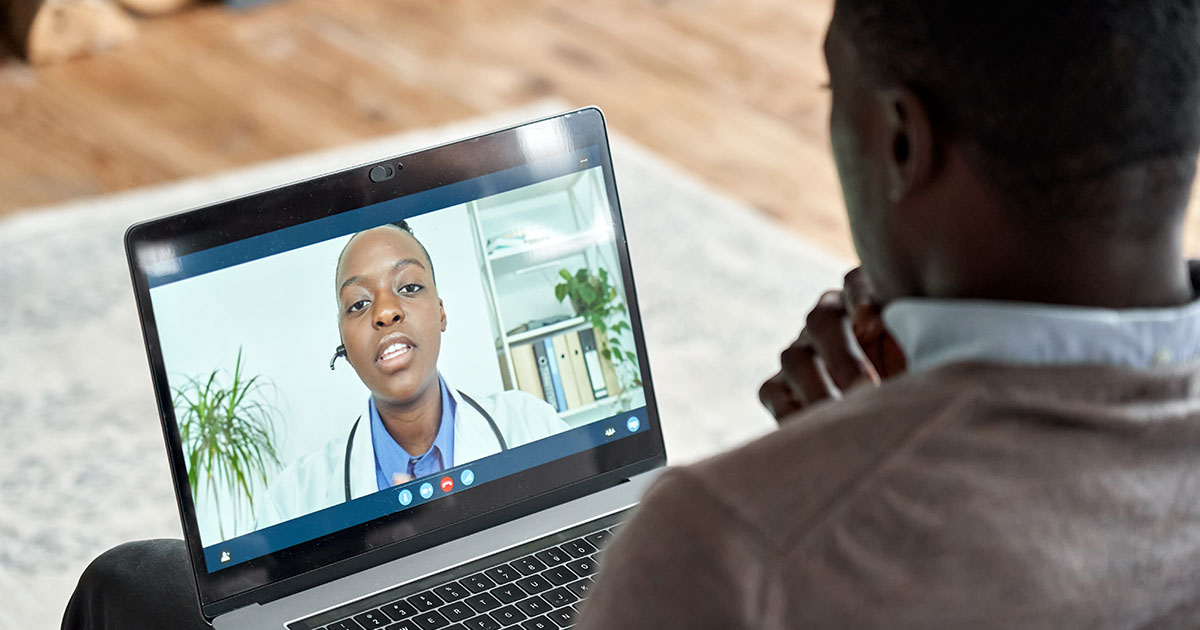Telemedicine: (Not Quite) the New Normal
It goes without saying that 2020 has been a difficult year for almost everyone. From health anxieties and fears of survival, to the isolation and loneliness brought about by quarantine, these issues have only been compounded by financial concerns and job insecurity.
I work in the field of child and adolescent psychiatry, with patients who experience a multitude of mental and behavioral health issues. Although I’ve been practicing telemedicine for years, this is the first time many of my patients are having to participate in our telehealth sessions from home rather than from a dedicated healthcare facility with a nurse or other support staff assisting. Navigating care from home during a pandemic has created its own set of challenges, and these are exacerbated by all the other issues my patients and their families are currently facing. Some patients’ parents have lost their jobs and therefore their health insurance. While my clinic will make arrangements and continue to provide care for patients in need, there are some patients who are unable to afford the medication they require.
Many of my patients’ parents have had the opportunity to see firsthand, some for the first time, the extent of the issues their child is facing. Some parents had coping strategies dependent on their social lives, so their own mental health is starting to deteriorate.
During such an unprecedented time, it is advantageous telemedicine has become more accessible than ever before thanks to legislative updates, and many people have postulated that telemedicine is going to remain the new normal post-COVID-19. While the pandemic has shown some patients the benefits of telemedicine and prompted many to receive care in ways they consider new and innovative, what some fail to consider is telemedicine is only likely to remain the new normal should the legislative updates for telehealth be enacted permanently. And if it does become the new normal, we need to make sure it’s accessible for all.
The Coronavirus Preparedness and Response Supplemental Appropriations Act is temporarily increasing access to healthcare via telemedicine by loosening HIPAA laws for video chat. The Drug Enforcement Administration (DEA) has made temporary changes to the Ryan Haight Act that loosen restrictions on prescribing controlled substances via telemedicine. Private payers have also jumped on board, with many of the major private insurers loosening restrictions for telehealth regulations. These updates benefit patients and would continue to increase access to care should they be enacted permanently. But having to make the sudden leap to administering telehealth services to patients at their homes has also highlighted some issues which need to be addressed and other policies which can be implemented by healthcare organizations to make telehealth sessions in general as productive as possible.
Develop a formal written protocol
When adopting a telehealth program, I’ve found it’s important for healthcare facilities to develop a formal written protocol for both clinicians and patients to ensure patients get what they need out of thesession. A written telehealth protocol can help patients better prepare and navigate the technology they need for a successful session. Having clinicians follow their own written protocol will help ensure continuity of care for the patient, assist with reimbursement for services and make future sessions run smoother. The written telehealth protocol for clinicians should require them to document whenever there is a limitation during their encounter. For example, with my patients now participating in their appointments from home, I am unable to have a nurse take their vital signs. Rather than simply omitting their vitals from my documentation, I notate I was unable to take the patient’s vital signs and why I was unable to take them.
Consider other economic barriers
It’s also important for clinicians and healthcare administrators at the facilities where they’re working to remain cognizant of the other barriers that prevent many people from seeking care virtually, even as telemedicine becomes more widely accepted and accessible. Many low-income patients are still not inclined to seek treatment via telemedicine simply because technology in general is unfamiliar, even though Medicaid will cover the cost of their sessions. Patients who are middle class or upper middle class tend to be computer literate and have access to better resources, so it doesn’t feel as unfamiliar to schedule a telehealth appointment. However, many low-income patients face additional barriers, such as not having the technology at home to be able to participate in telehealth sessions, or an internet connection, or even the space to have a private session away from family members if they are living in a smaller home.
Be prepared to offer translation services
Language is an additional barrier to be considered that prevents some patients from seeking care via telemedicine. Those speaking English as a second language, or little to no English, might also need translation services in addition to healthcare services. Whenever possible, try to plan accordingly so there is a translator available to assist when needed. Many healthcare facilities have a translator on staff but need to be mindful of when their assistance is needed, especially during virtual visits.
Send additional appointment reminders
I have found appointment reminders for telehealth sessions taking place while a patient is at home are just as important, if not more important, than reminders for appointments when the patient travels to a facility for the session. Especially during this time, patients’ schedules look so different than they did a few months ago. It’s easy for them to lose track of time and get appointment dates and times mixed up. I recommend sending extra appointment reminders should the patient opt in to ensure they remain on track with their sessions. As a clinician, my experience with telemedicine has been incredibly positive. A few years ago, I chose to only practice via telemedicine because of the flexibility it affords me. I want my patients’ experiences with telemedicine to be just as positive as mine has been, wherever their encounters take place now or in the future. It’s my hope the same legislation that has helped increase access to care during the pandemic is enacted permanently and stakeholders continue to brainstorm ways to increase access to telemedicine for all patients beyond breaking the legislative red tape.

About the author
Dr. Susan Larson
Dr. Larson is a child and adolescent tele-psychiatrist. She has been a locum tenens clinician for five years.





